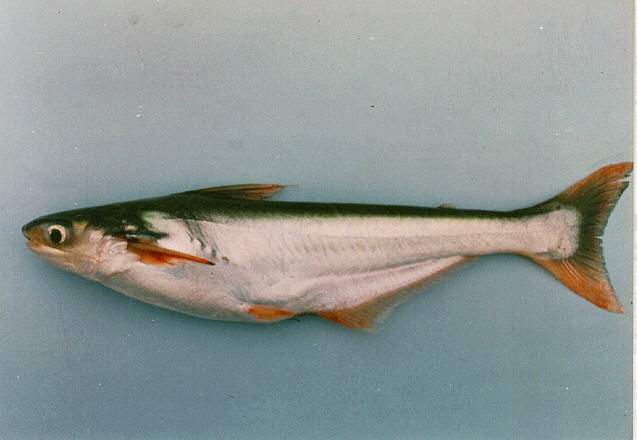|
Pangasius polyuranodon Bleeker, 1852 |

|
|
photo by
Baird, I.G. |
| Family: | Pangasiidae (Shark catfishes) | |||
| Max. size: | 80 cm SL (male/unsexed) | |||
| Environment: | benthopelagic; freshwater; brackish, potamodromous | |||
| Distribution: | Asia. | |||
| Diagnosis: | Dorsal spines (total): 2-2; Dorsal soft rays (total): 6-8; Anal spines: 0-0; Anal soft rays: 33-43. Body somewhat elongated with short predorsal length (25.2-29.2% SL); a long caudal peduncle (17.2-21.8% SL); short head length (16.1-20.1% SL); and, short mandibular barbels (length 11.7-42.2% HL). Swim bladder 3-chambered, extending to above anal-fin base (Ref. 46915). Dorsum dark blue to blue-black; 3-4 lowermost principal caudal rays white; vomerine teeth appearing as 2 joined patches in juveniles (Ref. 12693); vomerine teeth united into quadrangular patch, 1.5 times broader than long, not confluent with palatine teeth patch; anal fin base elongate, its length 3.1-3.6 times in SL; dorsal and pectoral fin spines slender; snout blunt (Ref. 43281). | |||
| Biology: | Found in lakes and rivers (Ref. 56749). Occurs in estuaries and lower reaches but has also been observed in the upper reaches during the rainy season. Species is omnivorous with a tendency to opportunism (Ref. 46915). | |||
| IUCN Red List Status: | Least Concern (LC); Date assessed: 07 June 2019 Ref. (130435) | |||
| Threat to humans: | harmless | |||